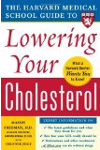Advertisement
Niacin, also known as vitamin B3, comes in two forms -- nicotinic acid and nicotinamide. Both boost protective HDL and lower harmful LDL and triglycerides. Most people who take the high doses of standard, immediate-release niacin that are needed to improve HDL experience a feeling of flushing or itching, usually in the face. It starts within 30 minutes of taking the medication, and lasts for an hour or so.
No-flush niacin doesn't contain either nicotinic acid or nicotinamide. Instead, it contains inositol hexaniacinate. In theory, the body should slowly convert this into nicotinic acid. In reality, it doesn't. An excellent study by researchers at the University of Washington School of Medicine showed that taking no-flush niacin generates virtually no free nicotinic acid, and has little or no effect on HDL. No-flush niacin lives up to the no-flush part of its name because it isn't providing the body with any niacin.
I also recommend staying away from extended-release niacin. Instead of delivering a big bolus of niacin, it generates a lower, steady dose of the medication for hours. Although this eases flushing, it keeps blood levels of niacin high all day. The liver never gets a break from processing niacin, which has led to cases of severe liver damage.
The newest niacin is intermediate-release niacin. It is currently a prescription-only medication, sold as Niaspan. It delivers niacin slower than the fast-acting types, but is washed out of the body after 12 hours or so, giving the liver a break. The slower release, combined with taking it at bedtime, helps minimize flushing, or at least the experience of it.
No-flush niacin doesn't contain either nicotinic acid or nicotinamide. Instead, it contains inositol hexaniacinate. In theory, the body should slowly convert this into nicotinic acid. In reality, it doesn't. An excellent study by researchers at the University of Washington School of Medicine showed that taking no-flush niacin generates virtually no free nicotinic acid, and has little or no effect on HDL. No-flush niacin lives up to the no-flush part of its name because it isn't providing the body with any niacin.
I also recommend staying away from extended-release niacin. Instead of delivering a big bolus of niacin, it generates a lower, steady dose of the medication for hours. Although this eases flushing, it keeps blood levels of niacin high all day. The liver never gets a break from processing niacin, which has led to cases of severe liver damage.
The newest niacin is intermediate-release niacin. It is currently a prescription-only medication, sold as Niaspan. It delivers niacin slower than the fast-acting types, but is washed out of the body after 12 hours or so, giving the liver a break. The slower release, combined with taking it at bedtime, helps minimize flushing, or at least the experience of it.

More About this Book
The Harvard Medical School Guide to Lowering Your Cholesterol (Harvard Medical School Guides)
This title is from the experts at one of the world's most respected medical schools - your complete guide to managing cholesterol and staying healthy for life. Everybody knows that high cholesterol...
Continue Learning about Vitamin B3 Niacin
Important: This content reflects information from various individuals and organizations and may offer alternative or opposing points of view. It should not be used for medical advice, diagnosis or treatment. As always, you should consult with your healthcare provider about your specific health needs.
